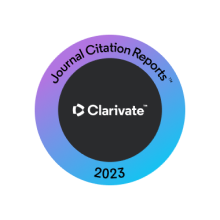Abstract
Background: Assessment of the shape and dimensions of PDA is usually done angiographically and in the majority of cases need arterial access. Our aim was to evaluate the value of routine 2 D echocardiography (ECHO) in predicting type, dimensions of PDA and to anticipate device size to be used during the intervention. Material and Methods: The charts of all patients who underwent transcatheter closure of PDA between January 2015 and December 2020 were reviewed. Their pre-procedure ECHO and catheterization details at the time of device closure were analyzed. Results: Total of 139 patients were reviewed and 8 were excluded because of lack of adequate echocardiographic or angiographic images. The mean age and weight of the study population were 2.6 ± 2.5 years (range 0.2-14 years) and 11.2 ± 7.8 kg (range: 1.5-57 kg), respectively. There was no statistically significant difference in PDA narrowest diameter (p=0.99) and predicted device type (p=0.54) between Echo and angiography. Echo slightly overestimated PDA length (p=0.01) and aortic ampulla dimension (p=0.047), while morphology of PDA was correctly identified in the majority of cases (82%). Conclusions: Pre-procedure echocardiography correlates well with angiographically obtained measurements and hence can be used to estimate PDA diameter, shape and guide device decide selection. Routine echocardiography can be used successfully to plan the intervention and in some cases to guide transcatheter closure.
Recommended Citation
Galal, Mohammed Omar; Ahmed, Zaheer; Hussain, Arif; Sharfi, Masroor; El Mahdi, Yahia; El Khattab, Fayzah; Alkouatli, Amjad; and Abou Zahr, Riad
(2021)
"Accuracy of routine 2D echocardiography to estimate PDA type and dimension and predict device selection for successful PDA occlusion,"
Journal of the Saudi Heart Association: Vol. 33
:
Iss.
4
, Article 15.
Available at: https://doi.org/10.37616/2212-5043.1284
JSHA Author Contr Agreement.docx (58 kB)
Figure 1.jpg (264 kB)
Figure 2.jpg (248 kB)
Figure 3.jpg (332 kB)
Figure 4.jpg (238 kB)
Table PDA MOG 26 Jul.docx (17 kB)
Creative Commons License

This work is licensed under a Creative Commons Attribution-Noncommercial-No Derivative Works 4.0 License.




